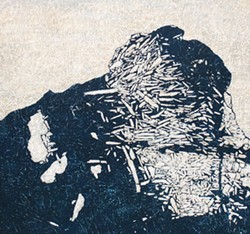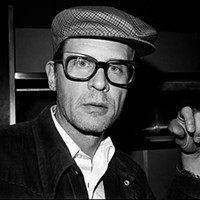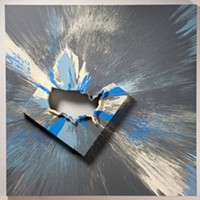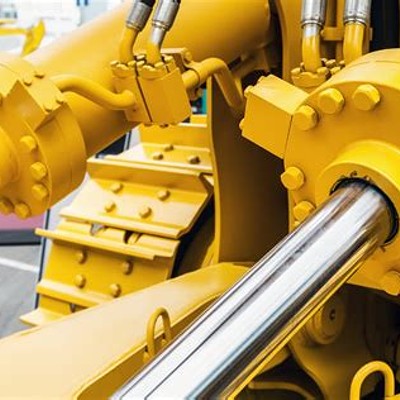Our disappearing glaciers make fools and fatalists of us all. The earth is heating up and we're complicit. Our industries, our air conditioners and particularly our cars are heating up the earth's surface, melting ageless ice chunks to slushy saltwater and letting the sun change our lives forever. It's true. But that's happening over there and we've got more pressing issues. We're late to work, the kids are hungry and the dog just shit on the porch. Who's got time to worry about melting glaciers? We've got bigger problems. Well, actually we don't. Ever seen the size of a glacier?
Marek Ranis is no fool and no fatalist, though he could be a Chicken Little. Ranis won't shrug his shoulders and return to the routine. He wants to ring the alarm, rally the weary, kill the indifference in all of us. And there's one important difference between Chicken Little and Ranis. Chicken Little was wrong.
In his paintings, showing at the Joie Lassiter Gallery through October, Ranis gives us a glimpse of our (changeable) future today.
"Albedo," in Latin, means white. Here, the word refers to the reflectivity of the earth's surface. As surface ice and snow melt, the earth's ability to reflect light and heat is diminished. We absorb more solar energy, ice turns to water, sea levels rise, and land mass shrinks. More than 10 percent of the earth is covered with ice and snow -- if melted, the sea level would rise 70 meters. Such an event would make the recent flood in New Orleans look like a puddle in the sidewalk.
Ranis' paintings are based on satellite images of glaciers, ice shelves and icebergs. The paintings give us the big picture, illustrating the loss of surface whiteness and alluding to the daily declination of this chilly portion of our global infrastructure. This geologic event should be stunning, but our perception of time denies us that reaction. Ranis' paintings slow us down as they quicken the progress of the event. They grant us access to a comprehensible view of the process. Both alluring and alarming, the paintings allow us witness to a history we can still affect.
"Albedo C2" is the largest painting in the show, the one most literally descriptive of the melting process, and the best. A central black mass (of ocean water) is shattered by thousands of ice shards floating over the black surface. The mass is bordered on two sides by ice floes still largely intact.
The thick black impasto surface is rich and dark and boundless. The not yet compromised ice mass is covered with lines describing topographic delineations -- ridges, cliffs and valleys -- a wild and undisturbed landscape. The dark area of the painting is instantly decipherable as disintegration: things falling apart, breaking away -- the undoing of natural history comprehensible only in glacial time. The beauty of the painting conceals the casual elimination of the immense and fragile glaciers and detours any concern I may have. And it does just that initially, until I remember what this represents, and I realize this is the first time I have ever devoted more than 30 seconds to any image describing a global slow motion collapse. All the paintings in this show raise the cry of wilderness lost; this painting screams.
"Albedo G24" is a serpentine mass of land stretching left to right across the canvas. White ice, tinted with blue and purple, encases the brown body of land, and rivers of water cut the land between glaciers. In a less compromised time, there would be no brown here at all -- the brown areas are heat induced wounds. The shape of the exposed land is roughly the shape of a human body; the water runs across the body of land like blue capillaries of life, but that life-giving association is false. The water is poison, not life blood; the land revealed under the ice is raw flesh. In time, the water will rise to conceal the land forever. Under ice, the land is a preserved promise; under water, it is a premonitory curse.
"Albedo G22" is the painting which shows the greatest earthly degradation from global warming. This painting shows little white and much brown. The earth below the vanished glacier resembles an enormous sponge; it is deeply pocked and porous. Rivulets of blue wander through the deepest erosive pockets of ancient sediment, rock or clay. The brown sponge surrounds a doomed area of ice, a once great mass reduced to a thin fragile profile resembling a luminescent jellyfish drying up over rough coral. The painting has little built up surface paint; it lacks the layered richness of the icy impastoed pigment in the whiter, chillier paintings. The terra firma sections have been scraped flat and the ice is veil thin. The poverty of this landscape is expressed in the rubbed and scraped-to-the-bone flatness of the canvas, as if the sun's heat has removed the surface of the ice away with a razor.
Ranis' whitest paintings are his juiciest paintings.
"Albedo C16" and "C14" show the least solar degradation. A single mass of blue-white ice -- sheer, hard and monolithic -- is bordered by a thin dark blue/black line of water. Beyond the blue/black line are greater and lesser chunks of floating ice, pieces of the icy floe, thousands of floating islands clotted together, separated by blurry lines of mushy water. At this stage of dissolution, the paintings resemble a jigsaw puzzle, adjacent ice floes fitting each other's contours, alluding to fusion and reassembly.
But there will be no reassembly. Here are the first stages of global meltdown, our once brilliant white face now flushed with the dull glow of heatstroke. We have hastened earth's exhaustion and she whimpers. We tend to hurry things and now we hasten our own hot and soggy future, a self-induced destiny beautifully rendered in these prescient paintings of arctic dissolution.
With polymer on linen, Ranis freeze frames the future in icy sight-bites, heirloom signposts and treasures for our progeny. Best tell the kids to hang the paintings high on the wall. The water's rising.
Marek Ranis' exhibit, Albedo I, is on display at the Joie Lassiter Gallery, 1440 South Tryon St., through October. For information, call 704-373-1464.
Latest in Visual Arts
More by Scott Lucas
Calendar
-
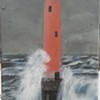
NEW WINDOW GALLERY-Pat Rhea-ACRYLIC PAINTINGS-April 05-30 2024 VALDESE, NC 28690 @ New Window Gallery/Play It Again Records
- Through April 30, 12 p.m.
-
Derek Hough - Symphony Of Dance @ Ovens Auditorium
-
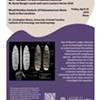
"Blood Residue Analysis of Paleoamerican Stone Tools in the Carolinas" @ Native American Studies Center
- Fri., April 26, 12-1 p.m.
-

ARTS RENAISSANCE, a GALA supporting the ARTS in South Carolina @ the Columbia Museum of ART
-
 The Piano Guys @ Ovens Auditorium
The Piano Guys @ Ovens Auditorium
-
The death of CAST 5
What really happened to Charlotte's beloved experimental theater company?
-
Jessica Moss Makes the Gantt Center a Safe Zone for Local Artists 2
Flipping the script
-
Charlotte ink 7
Behind the pain with a trio of the Queen City's finest tattoo artists

